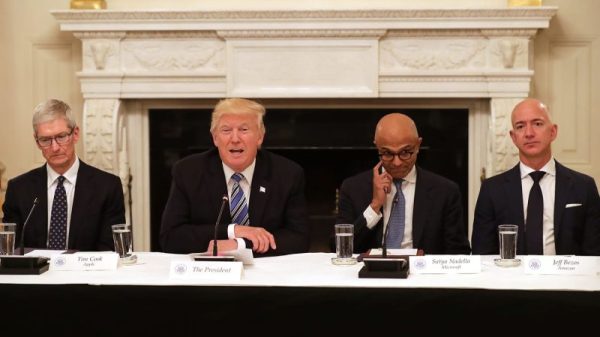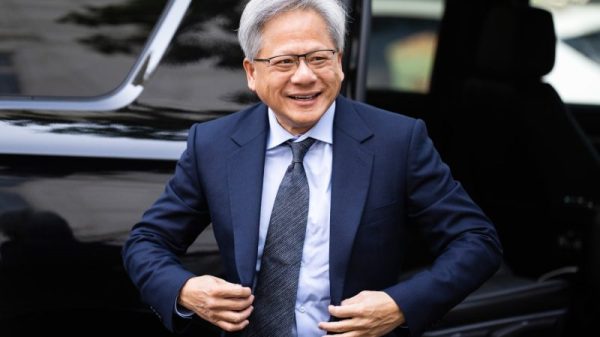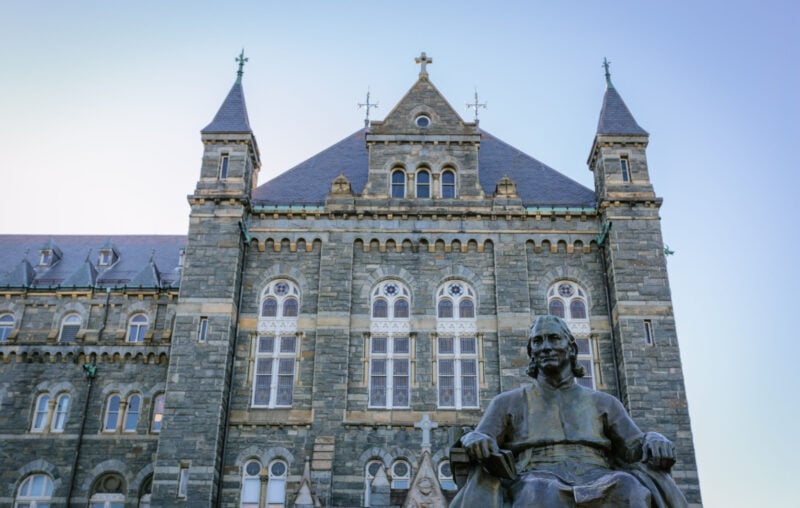Elite universities have embarked on a quest for diversity. They have devoted hundreds of millions of dollars to obtaining a diverse faculty. Many universities now require applicants for faculty positions or promotion to file diversity statements — statements attesting to the author’s commitment to diversity and the actions he has taken or will take to advance it.
At my institution, the administration has created a 48-page guidance document entitled Diversifying the Georgetown Faculty. Undergraduates must take two courses in Engaging Diversity to graduate. The law school requires a course that teaches students “to think critically about the law’s claim to neutrality and the law’s differential effects on subordinated groups, including those identified by race, gender, indigeneity, and class.” The University has an Office of Institutional Diversity, Equity, Inclusion and Affirmative Action, headed by the Vice President for Diversity, Equity, Inclusion, and Chief Diversity Officer. The medical school has its own Office of Diversity, Equity, and Inclusion. The cover story of the current edition of Georgetown Business, the business school’s magazine, is “Taking the DEI Journey.” The law school has hired an outside consulting firm to guide its Diversity, Equity, and Inclusion Strategic Planning Process. Typing the word “diversity” in the University’s search engine produces a flood of hits from every point of the school’s website. Broadcast emails inform us of every new diversity initiative.
It is as though elite universities have had an epiphany. They have seen the light of diversity and become wholly dedicated true believers. What accounts for this?
The answer is found on page 311 of volume 438 of US Reports — the page of the Supreme Court decision in Regents of University of California v. Bakke, on which Justice Lewis Powell identified “the attainment of a diverse student body” as an interest that could override the Equal Protection Clause’s prohibition on race-based decision-making.
Diversity can mean many things. In the academic context, it means only one: increasing the number of students and faculty from a specified set of “under-represented” demographic groups — African Americans, Hispanics, women, people of color, LGBTQ sexual orientation. It definitely does not refer to diversity in political, ideological, or philosophical viewpoint. To my knowledge, no college or university has ever undertaken an effort to increase the number of republicans or conservatives or libertarians or evangelical Christians or veterans on campus. No diversity effort of which I am aware has ever asked applicants or candidates about their thoughts, as opposed to their demographic identities.
Here is an interesting philosophical question. Is it ethical to give the members of certain under-represented racial, ethnic, or sexual groups preferential treatment in admission to universities and colleges as students and in hiring as faculty? I believe that there are reasonable arguments both for and against this proposition. Colleges and universities that undertake diversity initiatives clearly think that the answer to this question is yes. They may believe that such preferential treatment is necessary to remedy the effects of past discrimination against the designated groups, or to counteract the effect of present ongoing discrimination. They may simply believe that proportional demographic representation is a requirement of social justice.
Here is a less interesting legal question: is it legal to give the members of certain under- represented racial, ethnic, or sexual groups preferential treatment in admission to universities and colleges as students and in hiring as faculty? The answer to this question is almost always no. The Civil Rights Act – Title VII, which applies to faculty hiring and Title VI which applies to student admission — generally outlaws such preferential treatment. Title VII prohibits consideration of membership in racial, ethnic, or sexual groups in hiring decisions unless it is for the purpose of remedying “a conspicuous imbalance in a traditionally segregated job category,” something that is irrelevant in the contemporary academic environment. What about Title VI? Does it permit preferential treatment for racial, ethnic, or sexual minorities for admission to colleges or universities, to remedy past societal discrimination against these groups? No. (See Bakke, pp. 307-10.) To combat present discrimination? No. To realize social justice? Emphatically, no. To obtain the educational benefits that flow from an ethnically diverse student body? Yes, as long as admissions committees consider these characteristics only as “a ‘plus’ factor in the context of individualized consideration of each and every applicant,” per Grutter v. Bollinger.
Why do colleges and universities focus so much time, effort, and money on “diversity”? It is because this is the only way they can legally pursue what they believe to be the demands of morality and justice. Why is the meaning of diversity always concealed beneath obscure and amorphous verbiage? It is because colleges and universities cannot legally give explicit preference to the members of the relevant groups, and must couch their actions in terms of educational benefits to make it appear that group membership is merely one of many factors they are considering while making individualized judgments on all applicants.
We might call this the “diversity dodge.” Those making the value decisions for colleges and universities believe that the right thing to do is to give preference to minorities until they occupy a share of the student and faculty slots proportional to their percentage of the population. The Civil Rights Act prohibits doing this directly. But colleges and universities can do it indirectly by saying that they are pursuing the educational benefits of a diverse student body. (Note that they cannot use this rationale to increase the number of minority faculty they hire, because obtaining whatever benefits flow from having an ethnically diverse faculty is not an interest that can override the restrictions of Title VII.)
One reason to believe that colleges and universities are using the language of diversity disingenuously is that they never check to see whether their diversity initiatives are actually producing the alleged educational benefits that justify the initiatives. In Grutter v. Bollinger, the Supreme Court case that upheld Bakke, the Court identified the educational benefits of a diverse student body as promoting cross-racial understanding, breaking down racial stereotypes, enabling better understanding of persons of different races, and creating a livelier, more spirited, more enlightening, and more interesting classroom discussion. It is certainly logical to believe that increasing the diversity of the student body would have these effects. Have they?
Grutter was 19 years ago. Over the ensuing years, has there been evidence of more cross- racial understanding on campus? Of less racial stereotyping and greater understanding of those of other races? Of livelier, more enlightening, more interesting classroom discussion? Has any effort been made to demonstrate this? Is it possible that these benefits are not being realized? How could that be? Is it possible that admitting members of minority groups to universities and professional schools for which others are better prepared could reinforce negative stereotypes? Could policies of preferential treatment cause resentment that impedes cross-racial understanding? Has there been more, or less, self-segregation on campuses?
I am not aware of any university or professional school that has undertaken studies to answer these questions. If they were interested in obtaining the educational benefits of a diverse student body, wouldn’t they? Would they, if what they were truly interested in was promoting social justice by increasing minority representation on campus? If that were the goal, would such studies be helpful or detrimental? How have the studies that cast doubt on the educational value of preferential treatment for relevant minorities been received?
In the 1950s, Southern politicians who disagreed with the Supreme Court’s ruling in Brown v. Board of Education (requiring the desegregation of public schools) mounted a campaign of “massive resistance” to the enforcement of the ruling. The diversity movement in higher education is a present-day analogue. The faculties and administrations of today’s colleges and universities clearly disagree with the Supreme Court’s interpretation of the Equal Protection Clause and Civil Rights Act, and have decided to do everything they can to escape its enforcement.
I offer this as an observation, not a criticism. If colleges and universities truly believe that the current restrictions of the Equal Protection Clause and the Civil Rights Act are unjust, I can raise no moral objection to their doing everything they can to evade them. I can object, however, to their doing so hypocritically and fraudulently. The advocates of massive resistance in the 1950s publicly declared their opposition to the ruling in Brown, and openly undertook efforts to thwart its enforcement. Contemporary colleges and universities never openly assert moral opposition to the restrictions of the Civil Rights Act. Rather, they publicly declare their commitment to the law while covertly evading its restrictions.
Consider faculty hiring. The law governing it is clear. Schools can mount vigorous outreach programs–undertake affirmative action–to persuade under-represented minorities to apply for faculty positions. There is no legal restriction on what they can do to increase the number of minority candidates in the applicant pool. Once the pool is assembled, however, and the selection process begins, no decisions can be made on the basis of the race, sex, or ethnicity of the candidates.
This distinction is reflected in the boilerplate language that must be included in every faculty job ad:
University X is an Equal Opportunity/Affirmative Action Employer. All qualified applicants are encouraged to apply and will receive consideration for employment without regard to race, color, religion, national origin, age, sex (including pregnancy, gender identity and expression, and sexual orientation), disability status, protected veteran status, or any other characteristic protected by law.
“All qualified applicants are encouraged to apply” is the affirmative action part. The school is committing itself to engage in outreach efforts to create the widest and most diverse applicant pool possible. All “will receive consideration for employment without regard to race, color, religion, . . .” is the equal opportunity part. Selection from the pool must be made without consideration of the identified categories.
University administrations are fully aware of the legal rules. I have never seen one make any effort to publicize the distinction between assembling the applicant pool and the selection process, nor enforce the restrictions on the latter. Faculty search committees continue to base selection decisions on the prohibited factors because its members have no idea that doing so is a violation of the Civil Rights Act. Such decision-making is a logical response to administrative pressure for diversity. I have personally witnessed this almost every time I have been involved in a faculty search.
I can offer no such first-hand evidence with regard to the colleges’ and universities’ efforts to evade the legal restrictions on the student admission process. But the wide gap in test scores and GPAs between minority and non-minority admissions revealed by lawsuits and other studies casts doubt on the schools’ claim that they use race and ethnicity only as “a ‘plus’ factor in the context of individualized consideration of each and every applicant.” The available statistical evidence suggests that race and ethnicity constitute the most important, if not the determinative, factor in a large number of admission decisions.
In my opinion, there is nothing morally objectionable about colleges and universities that openly state that they believe the current interpretation of the Civil Rights Act to be unjust using every loophole in the law to avoid the injustice. In contrast, it is morally objectionable, because it is fraudulent, for colleges and universities that express firm public commitments to the Civil Rights Act to not only fail to enforce its restrictions, but also undertake vigorous efforts to covertly violate them.
These days, diversity usually comes bundled with equity and inclusion. Although I am not entirely sure what that means, ensuring that members of minority racial, ethnic, religious, and sexual communities are treated fairly and made to feel welcome and valued are surely commendable activities.
A skeptic of the current diversity movement may suspect that bundling such praiseworthy activities with diversity initiatives is being done to extend the moral luster of the former over the latter — to make it appear that affording minority groups preferential treatment in hiring and admission is as uncontroversially morally acceptable as is affording them fair and welcoming treatment. Indeed, I may be such a skeptic. But such considerations are irrelevant. Expressing doubts about the propriety of diversity initiatives says nothing about equity and inclusion initiatives. One can support equity and inclusion initiatives without supporting diversity initiatives.
Personally, I do not support such initiatives. I believe that people should be judged as individuals on the basis of their character and actions and not as tokens of groups. But I also believe that private colleges and universities should be allowed to pursue whatever values and conceptions of justice they hold, and hence, that they should be allowed to give the members of designated minority groups preferential treatment in admission and hiring if they believe that social justice demands it. I have argued in print that the Civil Rights Act should not be interpreted to prohibit such preferential treatment. My dissatisfaction with the diversity movement on campus is not that the schools do not share my moral judgment on the matter. It is with the duplicitous way the schools behave given that the Civil Rights Act does prohibit race-, ethnicity-, and sexual-based preferential treatment in faculty hiring and severely restricts its use in student admissions.
Colleges and universities generally require their faculty and employees to obey the law. One of the few ways that those of us who are tenured professors can lose our jobs is to break the law.
And yet, when it comes to faculty hiring and student admissions, the schools do everything they can to encourage their faculty and admissions staff to do precisely that.
This year, the Supreme Court will decide whether to close the diversity loophole opened by Bakke. If it decides to do so, I believe that at least part of the reason will be that the schools have proven that they cannot be trusted to adhere to the law as it is presently constituted.
And this, of course, is the reason for legally banning the distribution of benefits and burdens on the basis of race, sex, and ethnicity in the first place. There is nothing inherently wrong with making such distinctions among people. Race-, religion-, and ethnic-group self-help is the dominant strategy for socially disfavored groups to overcome prejudice and escape from poverty. But social psychology, public choice economics, and all of human history teach that human beings in positions of power cannot be trusted to make such distinctions benignly.
Denying colleges and universities the right to base admission and hiring decisions on race, religion, sex, and ethnicity is not some fundamental moral requirement, but a necessary prophylactic against the temptation to advance the interests of socially favored groups over those of others.
Among my academic colleagues, there must be many silent skeptics of the diversity dodge who maintain a secret commitment to evaluate all students and potential faculty members on the basis of their characteristics as individuals regardless of their race, sex, or ethnicity. Their silence is entirely rational, given the reaction that expressing opposition to affirmative action can produce. But such silence is not an option for me. This year, I have to conduct a faculty search. I intend to do so in strict adherence to the requirements of the Civil Rights Act, which means that we will make our best efforts to attract applications from all sources and that there will be no consideration of race, religion, sex, ethnicity, or sexual orientation in the selection process. This, of course, cannot be done in secret. Hence, this public dissent from academic orthodoxy.



























